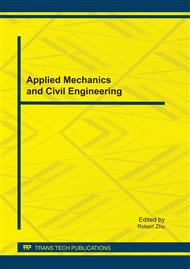p.128
p.134
p.140
p.144
p.149
p.154
p.159
p.167
p.175
Seismic Performance Evaluation of a Steel-Concrete Hybrid Frame-Tube High-Rise Building Structure
Abstract:
Due to its unique advantages, the steel-concrete hybrid structure has been widely used in tall buildings around the world. In Mainland China it has been utilized as one of the most popular structural types for super tall buildings. In this study the seismic performance of a code-exceeding tall building with the hybrid frame-tube structure to be constructed in Beijing is evaluated by numerical analysis. The analytic model of the structure is established with the aid of PERFORM-3D program, and the nonlinear time history analysis is performed by inputting four sets of earthquake ground motions. The elastic dynamic characteristics, the global displacement responses, the performance levels and the deformation demand-to-capacity ratios of structural components under different levels of earthquakes are presented. Numerical analysis results indicate that the hybrid structure has good seismic performance.
Info:
Periodical:
Pages:
149-153
Citation:
Online since:
October 2011
Authors:
Price:
Сopyright:
© 2012 Trans Tech Publications Ltd. All Rights Reserved
Share:
Citation:


